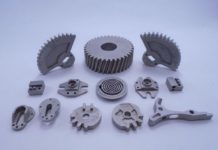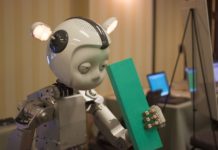Enzo Guaglione –

About two millions of years ago appears in Africa the ’Homo Habilis, able to make primitive instruments, like chipped stones, and to build rough shelters. From this era onwards, the cultural evolution is perceived together with the biological evolution. Since the Homo Habilis is a hunter, the first worked stone tools appears, probably the first human invention. Starting from the primitive man of the stone age to the age of metals, to ancient civilities and the Middle Ages, we reach the modern age, today and tomorrow, with more or less intelligent components and machine tools, all supported by precious software. In other words, we reach Industry 4.0, in which nowadays homo is no longer “sapiens”, but instead “digitalis”. Today digitalization enhances the secrets of our activity and interfaces with customers. Today there is the e-commerce, tomorrow the marketplace, the day after tomorrow, who knows …
In a very audacious image, Industry 4.0 mainly appears as a period of extraordinary thriving of technology, enlivened by three recurring questions: Why? What? How? To answer these questions we must synchronize with seven new technologies interfaced one another: 3D printing, nanotechnologies, Internet of Things, cloud technologies, augmented reality, expert systems and robotics and social manufacturing. They are technologies that are changing the way of designing, manufacturing and distributing whatever product worldwide and can create the new “digital wire” in the industrial chain, which allows organizing and managing automatically big quantities of information. The evolution in sectors of building materials, of heat treatments, of structural components for machine tools offers today great opportunities to improve companies’ competitiveness. Now the component itself can be a source of ideas.
Customers expect from Industry 4.0 a lean synchronization, i.e. the supply of products and services fully synchronized with the demand, that is to say it is necessary to supply precisely what customers want, in the required quantities (neither too much nor too little), when needed (neither soon nor late), where necessary and at the lowest possible cost. Then, a revolution wind is blowing in the component ambit to appreciate their value. What is your opinion? Do we think that a gear motor resembles in some way informatics, where the new aims at exceeding its predecessor, by performances and characteristics?
With Industry 4.0, clarity is convenient for all, provided that we are aware that digital alone does not represent innovation: man is still necessary to ennoble the human relationship; he makes the difference, which is not a further novelty but the way of managing it. It is true that Industry 4.0 highlights the most revolutionary expression of the homo digitalis, but it enhances the extreme preciousness of human resources; I would like to summarize the moral of the fourth industrial revolution as follows: the smart factory must not be smart only in things but also and especially in people. In other words, the homo sapiens has even more expression opportunities in a digital era that will increase automation levels. The competences and the skills sought for are changing but critical thinking and creativity become more important. We are squeezed by the efficiency vice, which calls for an in-depth analysis of human resources. Young, old and tired, do not give in!



